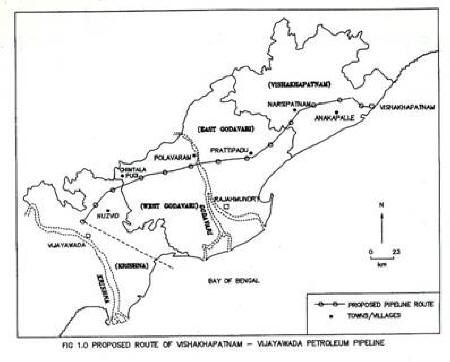Introduction
|
The process of economic transformation in recent years is seen to have involved a rapid increase in the scale of human pressure on the environment and also radical structural transformation particularly in terms of urbanisation and industrialisation. The rapid environmental changes associated with most industrial projects including mining and road building and upgradation of rail, pipeline and transmission lines do pose serious environmental problems. The decimation of air, land and water quality, loss of wildlife habitats and concomitant loss of biodiversity are obvious environmental impacts of developmental projects that become unprecedented both in nature and magnitude due to limited restorative and regenerative capacities of our ecosystem. Examples of forests and wildlife being directly or indirectly affected by developmental projects like hydropower and thermal projects, mining, road building, pipeline laying and transmission line are numerous (EPA 1978, park 1979, Ed Perkowski and Bowie 1980 and WII 1993). Fragmentation of natural habitats, diversion of forest lands to developmental projects, consequent degradation of residual forest at an accelerated pace and lack of alternate resources for forest dependent local community lead to deterioration and reduction of wildlife resources, both floral and faunal. These natural resources if left to be decimated both in quality and quantity will not only fail to meet the present day demands but would also offset the ability of the future generation to meet their needs. The conservation of ecological processes and through it the conservation of biodiversity therefore becomes imperative. For all potentially impacting development projects like multipurpose hydroelectric projects, thermal power plants, fertilizer plants, nuclear plants, transport and telecommunication projects, prior assessment and appraisal of impacts on the different components of environment (abiotic and biotic, including forests, wildlife and people) - would only ensure economic prosperity without altering the state of environment. India has made rapid progress in the development of energy generation capacity which has gone up from 1700 MW in 1950 to over 67,000 MW today (Ministry of Non Conventional Energy Sources, 1992). Despite this, the gap between the demand and supply of commercial energy in general and petroleum products in particular has been widening over the years with the urban population increasing at the rate of 4 % every year and the demands for modern fuels increasing at about 5.5 % every year (UNDP Report). It is in this context that the need for the conservation of petroleum products has assumed an unprecedented significance and urgency. Worldwide, pipelines have become the most economic and desirable mode of transport for petroleum and petroleum products. This is evident from an already existing network of over 1.5 million km of pipelines used in the world (EIL 1993). In India, the era of pipeline transportation began in the early sixties and has since expanded rapidly. Presently, there is a 7800 km network of pipelines in the country for transporting crude, natural gas and refined petroleum products. Pipelines have obviously become a superior mode of transportation since these involve lower cost of transportation, conservation of fossil fuels, minimum product loss during transit, least pollution of air and land and lead to mitigation of pressures on our rail and road transport systems. Having said so, admittedly the laying and operation of pipelines will have impacts on environmental values. Yet these pipeline projects can be enabled to substantially mitigate such impacts and thereby become more environment friendly. This would require that environmental concerns are given due consideration at the conceptual and planning phases of such projects. Most of these environmental concerns arise from choice of route, construction technology, pipeline design and activities associated with construction phase and post construction operation, maintenance and monitoring. 1.1 PROPOSED PROJECT 1.1.1 Project Setting 1.1.2 Project design 1.1.3 Salient features of the pipeline route Receiving terminal : Vijayawada Intermediate tap off : Rajahmundhry Products to be transported : Motor Spirit (MS) Superior Kerosene (SK) High Speed Diesel (HSD) Total length of pipeline : 363 Km Length of pipeline through i) Rocky areas : 7 Km ii) Marshy/flood prone areas : 6 Km Major crossings i) Rail : 3 ii) Major roads : 26 iii) Minor roads : 80 iv) Streams & canals : 211 v) Rivers : 6
1.2 ENVIRONMENTAL IMPACT ASSESSMENT AND SCOPE OF WORK The need for this EIA study of the VV Pipeline Project, arose insofar as it impacts upon the flora, fauna and ecological values, for preparing a report for consideration by the Government of India as a statutory requirement for clearing the project. The Wildlife Institute of India was requested to undertake this study on environmental impact assessment of the VV Pipeline Project as it relates to forest, wildlife and wildlife habitats along the proposed pipeline route. The scope of this study covers. 1. Evaluate the existing status of forests and wildlife present in and along the pipeline route. 2. Identify the impact of the construction and operation of pipeline on forest lands in the form of deforestation and on wildlife. 3. Suggest mitigation measures to be adopted. 4. Outline legal/statutory obligations to be fulfilled by the project proponent under the Forest Act and Wildlife (Protection) Act, 1972. |
Last Updated: October 7, 2015










